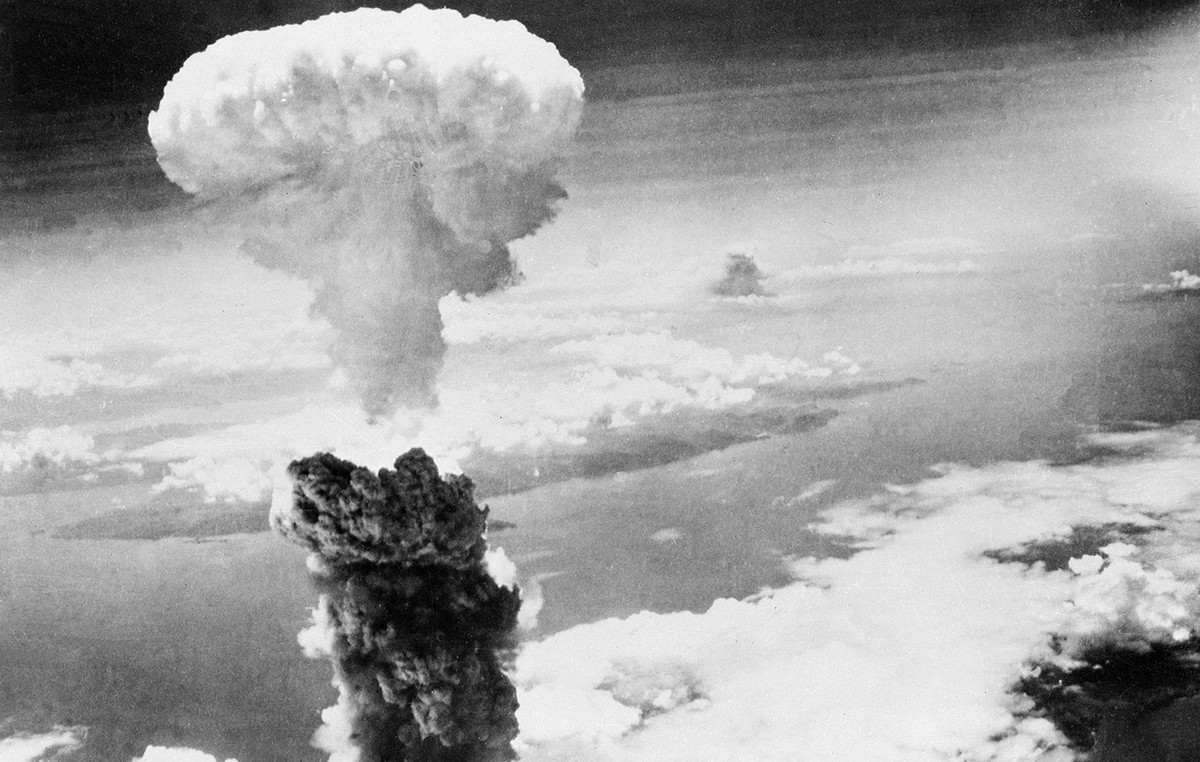Since the fatality involving the implosion of the OceanGate expedition to the wreckage of the Titanic, the world has never been more interested in discussions involving submersible vehicles, as Google research data points out.
Recently, in the context of the war in Ukraine, the head of Intelligence at the North Atlantic Treaty Organization (NATO) issued a warning about the possibility of Russia using submersibles to sabotage submarine cables that connect countries in an internet network –which would be a retaliation against nations that support Ukrainians.
David Cattler, secretary general for intelligence and security at the military alliance, said there was a “persistent and significant” risk of attacks by Russia against this type of infrastructure.
“There are growing concerns that Russia could attack undersea cables and other critical infrastructure in an effort to disrupt Western life, to gain leverage against the nations that are providing security to Ukraine,” he said.
“The Russians are more active in this domain than we’ve seen in years. in total, [os cabos submarinos] carry around 10 trillion US dollars in financial transactions every day, so they are really an economic pivot,” he added.
Those statements reignited a decades-old debate in the West about what impact the Russians could have on the global internet. After all, could the nation of Vladimir Putin simply cut countries off the internet using submersibles? A CNN explains below.
The importance of submarine cables
Undersea cables are the invisible force that sustain the modern internet as we know it – often, in recent years, financed by big techs like Meta, Google, Microsoft and Amazon. In a world of wireless and smartphones, these cables carry nearly all of our communications, even if we’re barely aware they exist.
“We generally have a perception of the internet as something invisible, that travels through the air, but all this flow of internet, of data, travels around the planet 98% of the time via submarine cables. These submarine cables are the physical skeleton, the main infrastructure that the internet resides for this information to be transmitted”, explains Victor Veloso, Master in International Relations from USP, to CNN.
“These cables are usually concentrated on the east and west coasts of the US, in China, also passing through Japan, and, more recently, in Europe. Europe began to play a greater role, with countries like the Netherlands, France and Germany increasingly increasing their influence within this intricate transmission network”, he adds.

A researcher specializing in cyber warfare, focusing on these infrastructures, Veloso says that these cables are “the thickness of a garden hose, with a transmission capacity much greater than any Wi-Fi device, reaching up to 200 terabytes per second of transmission” .
According to the telecommunications company TeleGeography, which constantly monitors the submarine cable network around the globe, there are, as of June 2023, 485 submarine cable systems in operation and another 70 under construction.
These numbers refer only to the cables responsible for transmitting data between countries – still excluding a whole range of submarine cables that transmit energy or that are privately used by governments, for example.
The US Department of Commerce points out that undersea cables play a “critical role” in not only interconnecting US states, but the US with the rest of the world. “They also support critical commercial, economic and national security endeavors, and carry the majority of civilian, military and government offshore communications traffic.”

In Brazil, the National Telecommunications Agency (Anatel) states that cables have been used in the national telecommunications system since 1857. More recently, in June 2021, a cable was inaugurated that directly connects Brazil and Europe, with a length of 6,000 kilometers , reaching a depth of 5,000 meters at some points.
“Submarine cables have some advantages over satellites. In addition to being faster, they are cheaper. The cost reduction is around 50%. When it rains heavily or there are hurricanes, for example, the signal is not affected. The capacity to send data over cable is up to 1,000 times greater than over satellite. And there is yet another plus point. The path that the signal takes along the bottom of the ocean until it reaches its destination is much shorter than the distance of the signal coming from the satellites”, points out Anatel.
Is it possible to attack these cables?
Yes, but the matter is not so simple. Researcher Victor Veloso explains that a submarine cable itself “is not something easy to defend”.
“You have to think about the entire length of that cable it runs there on the ocean floor and understand that an attack can come via submersibles, divers who get out of a boat and go to the cable and physically destroy it with tremendous ease. They are fragile assets, easy to be destroyed, ”he says.
Cybersecurity expert Rafael Franco told CNN that cables are subject to accidents caused by natural phenomena or marine animals. Loose anchors and fishing boats are also common factors in episodes involving cable damage.

However, Veloso points out: “The point is that the internet works based on an extremely redundant system.” That is, if a submarine cable is sabotaged, it is possible to rearrange the network to find another way for data to arrive from one point to another.
“If a given route is no longer accessible, the TCPIP protocol has the primacy to readapt this data transmission flow”, added the specialist.
Rafael Franco adds that there may be a temporary interruption or loss of connectivity in the areas served by the affected cable, but the contingency routes and recovery plans would work to minimize impacts.
Both experts agree that it would take a massive attack simultaneously hitting a range of important cables to create a real impact on connectivity.
West has a history of sabotage
As NATO intelligence chief David Cattler drew attention to the risk of a Russian attack on undersea cable infrastructure, UK Defense Secretary Ben Wallace said “there is no doubt that Russia has the intent and capability to hit the underwater lines.”
These statements are far from the first time that the West has conjectured about a potential Russian attack on these maritime telecommunications.
A “New York Times” report published in October 2015, for example, quoted US Navy officials speaking of concerns about Russian ships being too close to undersea cables for American comfort – which endangered “almost all global internet communications”.
A CNN, at the time, found that the alert arose when a Russian military ship called the Yantar suddenly crossed the Atlantic and began to make its way down the American east coast.

However, in terms of practical examples of sabotage of submarine cables that have already been practiced, it is often the West itself that is behind it.
In the 1970s, still during the Cold War, it was the US itself that tapped the Soviet Union’s submarine communication lines in the Sea of Okhotsk, in Russia’s far east.
In an operation by the CIA and the NSA, which became known as “Ivy Bells”, divers attached special equipment to Soviet cables in an espionage scheme that lasted for almost a decade.
In addition to the American agencies, the British agency for GCHQ intelligence also has a history of sabotaging undersea cables, as documents revealed by Edward Snowden in 2013 showed.
According to the documents, reported by The Guardian newspaper, GCHQ had “secretly gained access to the network of cables that carry the world’s telephone calls and internet traffic”.
The British agency was in possession of 600 million “phone events” daily, compromising more than 200 submarine fiber optic cables, Snowden showed.
The American NSA did a similar operation, called Upstream, accessing communications from these cables “as the data passes”.
The Russian Threat and the Risk to the Global Internet
NATO intelligence has become more attentive to potential sabotage promoted by Russia against submarine cables since the explosions in the Nord Stream pipelines, in September of last year, whose authorship has not been determined. A report by the “Wall Street Journal” even pointed to the possibility of Ukrainian authorship, which was denied by the country’s government.
After the Nord Stream episode, NATO significantly increased the number of ships patrolling the North and Baltic Seas and established a Critical Undersea Infrastructure Protection Cell.
“The threat is real and NATO is acting,” said German Lieutenant General Hans-Werner Wiermann, who has been in charge of the new cell since February.
However, Telegeography senior analyst Jonathan Hjembo argues that not only would the Russians not be able to bring about a global internet meltdown, it would hardly be desirable for Russia itself.
“It would be detrimental to the Russians and it wouldn’t be particularly easy to do any damage to the internet. Because there is incredible redundancy and resiliency built into internet networks, cables are down all the time, and if a cable goes down, a lot of capacity can be reverted to another system,” said Hjembo.
“It would require an effort to attack multiple cables simultaneously, which would be noticed very early, so practically impossible to achieve”, he adds.
“Additionally we need to consider that this would impact the Russians perhaps more than us. They are much more dependent on internet access than we are, because so much of our content is stored locally. If the Russians were to take down systems that affect the main European hubs, like in Frankfurt, Stockholm or Amsterdam, which they are very dependent on, chances are it would hurt them as much as anyone else”, concluded the analyst.
Researcher Victor Veloso also pointed out that the Russians could try to have an impact on the Ukrainians by attacking submarine cables that are in their own jurisdiction, and even in Crimea, occupied since 2014.
“Ukraine would struggle to get faster internet access, but they don’t rely solely and exclusively on these cables. There are terrestrial meshes too, with a much lower transmission capacity, but still you wouldn’t be able to switch it off completely from the map,” she explains.
Source: CNN Brasil
Bruce Belcher is a seasoned author with over 5 years of experience in world news. He writes for online news websites and provides in-depth analysis on the world stock market. Bruce is known for his insightful perspectives and commitment to keeping the public informed.







